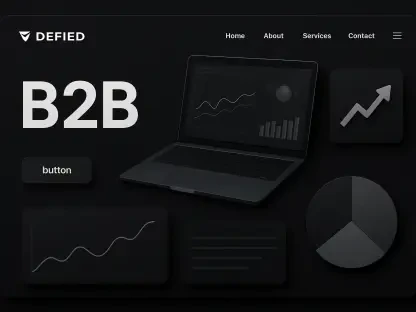In the fast-paced world of digital advertising, Google Ads remains a cornerstone for businesses aiming to capture online attention, yet the platform’s rapid evolution has left many marketers scrambling to keep up with the latest changes and trends. With automation tools reshaping campaign management, a staggering number of traditional tactics are becoming obsolete, challenging advertisers to rethink their strategies. This roundup dives into the shifting landscape of Google Ads, gathering insights from industry leaders, PPC specialists, and digital marketing experts to highlight five tactics that are losing relevance as automation takes center stage. The purpose is to provide a comprehensive view of outdated methods, compare differing perspectives, and equip advertisers with actionable ideas to stay competitive in this dynamic environment.
Navigating the Automated Era of Google Ads
The rise of automation in Google Ads, through tools like Smart Bidding and Performance Max (PMax), has fundamentally altered the role of PPC managers. Industry voices consistently point out that the shift from manual tweaks to strategic oversight is no longer optional but essential. Many experts argue that clinging to older methods risks inefficiencies, as algorithms now handle tasks once reserved for human intervention with increasing precision.
Differing opinions emerge on the pace of adaptation, however. Some specialists caution that full reliance on automation can obscure campaign transparency, advocating for a hybrid approach that retains some manual control. Others champion Google’s machine learning capabilities, suggesting that resisting these tools could mean missing out on scalability and performance gains. This debate sets the stage for identifying specific tactics that are falling out of favor.
A common thread among contributors is the need for advertisers to focus on feeding high-quality data into automated systems. The consensus leans toward upskilling in data analysis over micromanaging campaigns, as the future of PPC hinges on guiding algorithms rather than dictating every move. This perspective underlines the urgency of abandoning outdated practices to align with current trends.
Outdated Tactics Under the Spotlight
Moving Away from Phrase Match Keywords
One tactic drawing significant attention is the declining utility of phrase match keywords. Many PPC experts note that Google’s redefinition of match types, coupled with broad match’s improved intent capture via Smart Bidding, has diminished phrase match’s middle-ground appeal. They argue that exact match suffices for precision, while broad match scales reach, leaving phrase match as a less effective option.
Contrasting views exist, particularly among traditionalists who value the control phrase match offers. Some marketers express concern that broad match can dilute targeting, leading to irrelevant clicks despite algorithmic advancements. However, data-driven analysts counter that the risk of stunted growth outweighs these concerns, pushing for a bolder embrace of Google’s evolving match type framework.
The discussion reveals a broader tension between familiarity and innovation. Insights suggest that advertisers stuck on phrase match may miss out on the flexibility algorithms provide, especially for larger accounts aiming to expand. This tactic’s diminishing returns signal a need to pivot toward more adaptive keyword strategies.
Reassessing Standard Shopping Campaigns Against Performance Max
Standard Shopping campaigns have sparked renewed debate in light of updates to ad rank dynamics starting this year. Several industry leaders highlight their resurgence, praising the granular control and clearer attribution at the product-group level compared to PMax’s broader placements. They emphasize that for brand safety and detailed insights like impression share, Standard Shopping often outperforms automated alternatives.
On the flip side, proponents of PMax argue that its wider reach and cross-channel optimization are unmatched, particularly for advertisers with diverse inventory. Critics of Standard Shopping point out its labor-intensive nature, suggesting that automation saves time even if it sacrifices some oversight. This divide reflects differing priorities between control and efficiency.
A balanced perspective emerges from e-commerce specialists who recommend using Standard Shopping selectively, especially for high-priority products or brands needing strict placement rules. The takeaway is that while PMax dominates in scale, overlooking Standard Shopping entirely could jeopardize performance in niche or sensitive campaigns. This tactic’s relevance depends heavily on specific business goals.
Shifting Beyond GA4 for Primary Conversion Tracking
Conversion tracking through Google Analytics 4 (GA4) as a primary method is increasingly questioned by digital marketing professionals. Many cite delays in data processing and attribution mismatches with Google Ads native tags as critical flaws, undermining Smart Bidding’s effectiveness. They advocate for third-party tools or the Google and YouTube app for real-time accuracy.
Some analysts, however, defend GA4’s role, arguing it remains valuable for secondary reporting and audience insights despite its shortcomings. They caution against dismissing it outright, suggesting complementary use alongside more immediate tracking solutions. This viewpoint underscores GA4’s limitations while acknowledging its broader utility in analytics.
The prevailing advice focuses on prioritizing data immediacy to fuel automation. Experts stress that discrepancies from delayed tracking can skew optimization, particularly in fast-moving campaigns. Moving beyond GA4 for core conversion actions appears to be a growing consensus, with alternative tools gaining traction for their precision and speed.
Isolating Branded Terms from Performance Max Influence
The tendency of Performance Max to dominate branded queries has drawn scrutiny, with many PPC managers noting inflated ROAS figures that don’t reflect incremental traffic. A popular recommendation is to segment branded terms into dedicated search campaigns for better budget alignment and bid strategy control. Case studies shared by specialists show significant improvements in efficiency with this approach.
Dissenting opinions highlight the complexity of fully excluding branded terms from PMax, especially for smaller teams with limited resources. Some argue that historical performance data may justify allowing PMax to handle branded traffic in certain contexts, avoiding over-segmentation. This perspective reveals the practical challenges of implementing strict separations.
A nuanced take suggests starting with partial segmentation, testing the impact on overall campaign metrics before committing fully. Contributors agree that unchecked PMax dominance over branded terms often distorts true performance, pushing advertisers to rethink allocation. Tailoring this tactic to account size and goals emerges as a critical consideration.
Easing Up on Over-Pinning Responsive Search Ads
Over-pinning assets in Responsive Search Ads (RSAs) to control messaging is losing favor among advertisers, according to recent industry feedback. Many experts advocate for giving Google’s algorithms room to test asset combinations, noting that flexibility often yields better results than rigid constraints. They clarify that ad strength serves as a diagnostic metric, not a direct performance driver.
Conversely, some marketers express reservations about relinquishing control, particularly for brands with strict messaging guidelines. They argue that over-pinning ensures consistency, even if it limits optimization potential. This concern is often tied to industries where tone and branding are non-negotiable, creating a valid counterpoint.
The majority opinion leans toward balancing creative input with algorithmic freedom. Specialists recommend focusing on high-quality headlines and descriptions rather than fixating on pinning or vanity metrics like ad strength. Letting go of excessive control in RSAs is seen as a step toward leveraging automation’s full testing capacity, aligning with broader trends in PPC management.
Key Takeaways and Practical Guidance
Synthesizing these insights, the critical lesson is that automation’s rise in Google Ads demands a departure from manual-heavy tactics. Experts collectively stress prioritizing data quality for tools like Smart Bidding, using Standard Shopping for strategic control where needed, and segmenting branded traffic to ensure incremental gains. Practical steps include regularly auditing match type performance to favor broad or exact options over phrase match.
Another actionable focus is on refining conversion tracking setups to avoid delays, with many suggesting a shift to real-time tools over GA4 for primary metrics. Additionally, easing up on RSA over-pinning while maintaining creative relevance offers a low-risk way to test automation’s benefits. These tips provide a roadmap for advertisers to adapt their approaches based on campaign-specific needs.
The diversity of opinions also underscores the importance of context—automation isn’t a one-size-fits-all solution. Tailoring strategies to account size, industry, and performance history remains a recurring theme. This roundup distills a clear path forward: embrace change, but do so with informed, strategic decisions that balance control and algorithmic power.
Reflecting on the Path Ahead
Looking back on the discussions, it became evident that the Google Ads landscape has shifted dramatically, with automation at the heart of every strategic pivot. The insights gathered from various industry voices painted a picture of adaptation as a necessity rather than a choice. For advertisers who navigated these changes, the focus has been on redefining success through data-driven guidance of algorithms.
Moving forward, a key step is to continuously evaluate campaign structures against evolving tools, ensuring that outdated tactics don’t linger past their utility. Exploring hybrid models that blend automation with targeted manual oversight could offer a competitive edge. Additionally, staying updated on Google’s updates and testing new features early might uncover untapped opportunities.
Another vital consideration is investing in training or tools that enhance data analysis capabilities, as the quality of inputs will define automation’s output. For those ready to take the next leap, diving into community forums or industry reports can provide deeper insights into emerging trends. The journey ahead promises innovation, and proactive steps taken now will shape long-term success in this ever-changing field.









